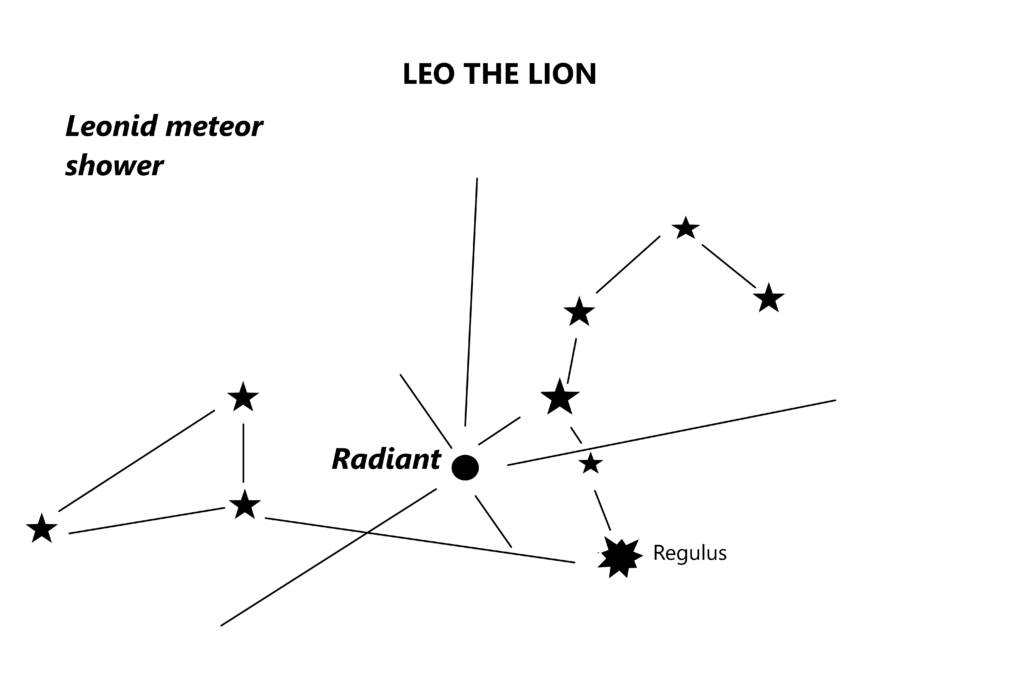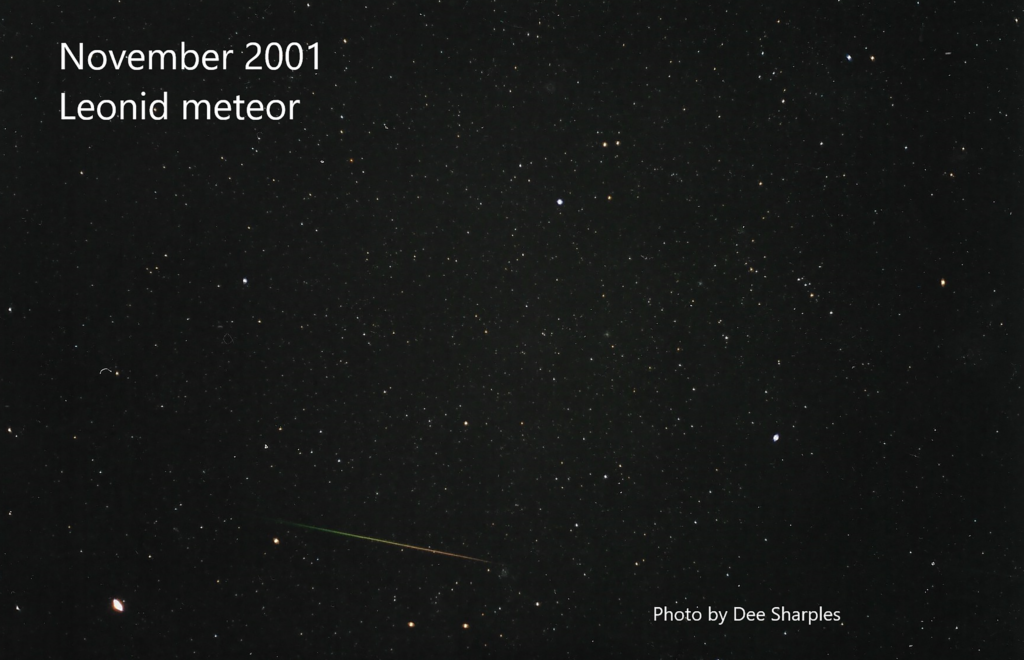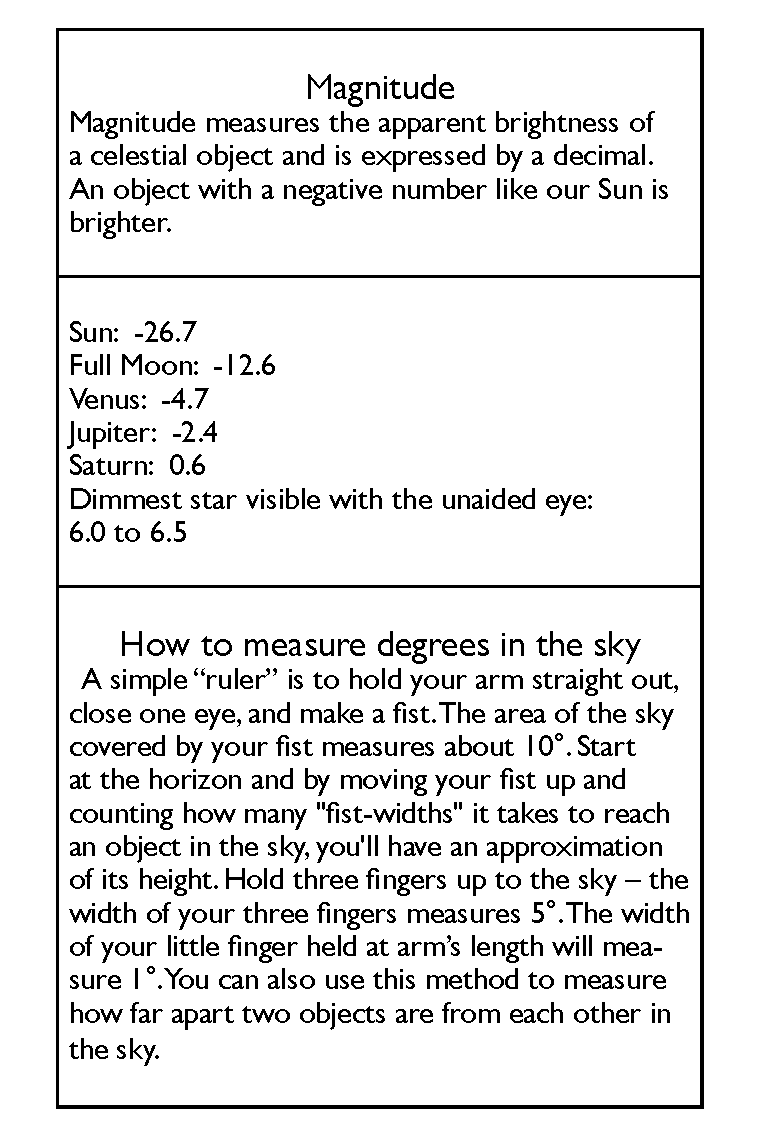The Night Sky
- DEE SHARPLES –
Leonid Meteor Shower and a Planetary Lineup

Twenty years ago in November 2001, ‘the stars were aligned’ with perfect conditions to observe the Leonid meteor shower. We enthusiastically set the alarm clock to wake up at 4:00AM. It was a Sunday morning, so no work that day. The sky was predicted to be clear – there would be no moon to brighten the dark sky. The temperature was unusually warm for late fall, and I had recently become interested in piggy-back photography. Walking outside to the backyard on what felt like a balmy summer morning, I opened my roll-off observatory and secured my 35mm film camera to the top of my telescope.

As I started to take random shots of the sky in all directions hoping I would catch a meteor streaking across the star-sprinkled background, I could hear my husband call out, “There’s one! There’s another one!” I soon realized I was actually missing the best part of the experience on the off-chance I would catch a picture of a Leonid meteor with my piggy-back camera setup. I quickly abandoned that plan and began to watch the show the way a meteor shower is intended to be enjoyed . . . by just looking up.
Although conditions this year aren’t going to be as perfect as they were in 2001, it’s still worth checking out the annual Leonid meteor shower. It peaks in the very early morning hours on November 17th. The constellation Leo the Lion, from where the meteors will appear to originate, will be in the southeast around 3:00AM. Unfortunately, this year on the 17th, an almost full moon will be in the sky and wash out all but the brightest meteors. However, this shower is active from November 6th to the 30th – chances are you’ll spot a sporadic meteor any time during that timeframe. But your best chance to see the most meteors will be on November 16th, the morning before the peak. The moon will set at 4:10AM giving you at least an hour of darkness to look for meteors.
This meteor shower is created by the dust and debris left behind by Comet 55/P Tempel-Tuttle when it visits our solar system every 33 years. These tiny fragments traveling at 44 miles per second, burn up in Earth’s atmosphere as our planet plows though this debris field once a year as we orbit the sun. Dress warm, relax in a lawn chair, and let your eyes wander the sky in all directions. If you spot a meteor, you’ll be able to confirm it’s a Leonid by tracing its path back to Leo, whose lion’s head is represented by stars forming a backwards question mark.
On November 7th, the first Sunday of the month, we turn our clocks back one hour to Standard Time. You’ll be able to observe the night sky earlier, which gives you the opportunity to share it with children.

A lineup of planets just after sunset is a highlight in late November and a fun place to start. The planet Venus, dazzling at magnitude -4.7, can be found within 30 minutes after sunset very low above the southwestern horizon. Left of Venus, you can find the ringed planet Saturn about 20 degrees above the horizon, looking like a yellowish star at magnitude 0.6. Next in line and higher yet, is the gas giant Jupiter, shining brightly at magnitude -2.4.

The Winter Solstice occurs this year on Tuesday, December 21st, at 10:59 AM and is the shortest day of the year with only 8 hours, 59 minutes, 10 seconds of daylight in Rochester, NY. After this, the days will start getting longer but only by a few seconds at first. Check out the website https://www. timeanddate.com for sunrise and sunset times specific to your area. Click on the tabs: Sun and Moon; Sun Calculator; and fill in the rectangle box with the name of your town or city. You’ll notice that the length of day varies by location.
